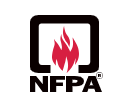
The National Fire Protection Association (NFPA) is a leading organization in establishing codes and standards for fire safety, including those related to fire pumps. Understanding NFPA standards is crucial for fire protection professionals, building owners, and facility managers to ensure compliance, reliability, and safety in fire protection systems. In this article, we will explore the key NFPA standards related to fire pumps, their importance, and how they impact fire protection strategies.
Key NFPA Standards for Fire Pumps
1. NFPA 20: Standard for the Installation of Stationary Pumps for Fire Protection
Overview
- NFPA 20 is the primary standard governing the installation of fire pumps. It provides guidelines for the design, installation, testing, and maintenance of stationary fire pumps used in fire protection systems.
Key Provisions
- Pump Types: NFPA 20 covers various types of fire pumps, including centrifugal, positive displacement, and electric and diesel-driven pumps.
- Installation Requirements: It details requirements for pump location, accessibility, and the necessary components, such as suction and discharge piping.
- Testing Procedures: The standard outlines the testing protocols for verifying the performance of fire pumps, including flow tests and pressure tests.
2. NFPA 25: Standard for the Inspection, Testing, and Maintenance of Water-Based Fire Protection Systems
Overview
- NFPA 25 provides guidelines for the routine inspection, testing, and maintenance of water-based fire protection systems, including fire pumps.
Key Provisions
- Regular Inspections: The standard specifies the frequency and procedures for inspecting fire pumps to ensure they are operational and compliant with NFPA 20.
- Maintenance Requirements: NFPA 25 outlines the necessary maintenance tasks, including lubrication, checking for leaks, and verifying the operation of controls and alarms.
- Documentation: It emphasizes the importance of maintaining accurate records of inspections, tests, and maintenance activities for compliance and accountability.
3. NFPA 70: National Electrical Code (NEC)
Overview
- While not exclusively focused on fire pumps, NFPA 70 provides essential electrical safety standards that impact the installation and operation of electric fire pumps.
Key Provisions
- Electrical Installations: The NEC outlines requirements for electrical wiring, grounding, and overcurrent protection for fire pumps to ensure safe operation.
- Hazardous Locations: It provides guidance on wiring and equipment used in areas where explosive or flammable materials may be present, which is critical for certain industrial applications.
4. NFPA 13: Standard for the Installation of Sprinkler Systems
Overview
- NFPA 13 addresses the installation of sprinkler systems, which often rely on fire pumps to supply adequate water pressure and flow.
Key Provisions
- Hydraulic Calculations: The standard includes requirements for hydraulic calculations to determine the water supply needs for sprinkler systems, often necessitating the use of fire pumps.
- Pump Sizing: It provides guidelines for sizing fire pumps based on the demands of the sprinkler system, ensuring adequate performance during a fire event.
Importance of NFPA Standards
1. Safety and Reliability
- NFPA standards ensure that fire pumps are installed and maintained according to best practices, enhancing the safety and reliability of fire protection systems.
2. Compliance and Legal Protection
- Adhering to NFPA standards helps building owners and managers comply with local fire codes and regulations, reducing the risk of legal liabilities and penalties.
3. Enhanced Performance
- Following NFPA guidelines contributes to the optimal performance of fire pumps, ensuring they provide the required flow and pressure during emergencies.
4. Streamlined Inspections
- Compliance with NFPA standards simplifies the inspection and maintenance process, as these standards provide clear guidelines and documentation requirements.
Conclusion
Understanding NFPA standards for fire pumps is essential for anyone involved in fire protection. Standards such as NFPA 20, NFPA 25, NFPA 70, and NFPA 13 provide critical guidelines for the installation, testing, and maintenance of fire pumps, ensuring compliance, reliability, and safety.
By adhering to these standards, facility managers, building owners, and fire protection professionals can enhance the effectiveness of their fire protection systems and ensure the safety of occupants and property. Staying informed about NFPA standards and best practices is key to developing a robust fire safety strategy that protects lives and assets from the devastating effects of fire.
